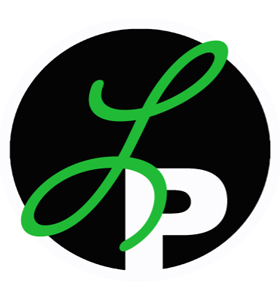No transcript for this video clip.
She lets her hands do the talking
Using sign language, Joanne Cosentino provides a voice, ears for those who need it
As flames and city officials raced across the TVs of San Diego’s living rooms in pace with last month’s wildfires, viewers might have taken note of something unusual to these on-screen disasters.
The daughter of deaf parents, Joanne Cosentino provided a link between the hearing community and the deaf community by serving as interpreter for the televised firestorm news conferences at the Office of Emergency Services.
While Mayor Jerry Sanders announced road closures and evacuations from behind his press conference podium, a woman with a bright face stood to his side, her hands fluttering like moths in a light. With her fingers she spelled out neighborhood names at lightning speed and made mesmerizing gestures for wind, planes and emergency.
Joanne Cosentino, a sign language interpreter for the nonprofit Deaf Community Services San Diego, was put to the task of interpreting the televised press conferences.
“People at the grocery store, they ask me, ‘Are you that interpreter?’ ” she said. “Yes I am. I appreciate that the hearing community appreciated it. They do care about the deaf community.”
After the Cedar fires in 2003, Deaf Community Services director Bonnie Sherwood wanted to make sure deaf people (who are not always capable of reading the rapid-moving news captions on TV) would have access to information in the event of another disaster. But such a service was rare, perhaps nonexistent, during 9/11 or Hurricane Katrina and Cosentino’s presence at the news conference was met with some skepticism.
“When I first showed up, I don’t think they knew what to do with me,” Cosentino said from the organization’s Hillcrest office, where she’s been based as an interpreter for a little more than a year. “They probably thought, ‘What is this person doing taking up TV time?’ “
Despite the seriousness she takes in providing a voice and ears for those who don’t have the best use of their own, Cosentino has a pretty good sense of humor about being misinterpreted. She has, after all, been on the job since she could talk, which is a skill she learned later than most.
Though you couldn’t tell by her bubbly eloquence, Cosentino was raised by deaf parents and her first and most natural language is American Sign Language.
“I can totally express myself better with my hands,” she said.
Cosentino interprets at Chula Vista High School and freelances for assignments (everything from jail and hospital visits to anatomy classes. She also does video relay work – a service that allows the deaf and hearing to communicate over a phone and television set with someone like Cosentino interpreting between the two.
Cosentino didn’t really begin to speak until kindergarten. But once she left the silent confines of her house and found the power of her voice, she became the family’s main interpreter – a daunting task passed off by her three hearing brothers.
“You grow up a lot faster when you’re communicating for adults with the outside world. I had to learn what a bank teller does, what Social Security meant. But I also learned how to approach people.” Despite no formal education in language, Cosentino merged easily into the professional world of interpreting, starting with a gig at Intel.
Five years ago, she moved to San Diego from New Mexico, where she was raised, at the urging of her younger brother, who is also a professional interpreter.
Since the days of assisting her parents, Cosentino, 30, has seen public awareness of the deaf community change significantly.
“Deaf culture was never a mainstream thing; kids used to make crazy sounds around my parents,” she said. “Now, hearing kids at school want to be friends with deaf kids; they ask them for a sign name.”
While she talks about her clients and the connection she feels toward them, her fingers clasp into specific shapes near her heart. You don’t have to be trained in ASL to get the point. She communicates in a way that’s deeper than words, and she insists that deaf culture is just as rich as hearing culture.
“Sometimes, I put my foot down a little too hard on people, but all I want is for people to have equal access,” she said. “It’s the law. It’s personal.”
Though the vocabulary is evolving and the structure is simpler than English; there’s an expressive depth of ASL not possible in merely spoken words. It’s enough to make a tongue jealous.
“If you ask me which one I’d feel more inclined to be with it, would probably be with the deaf community.” With a flash of a mischievous smile, she adds, “No offense to the hearing.”

first person to comment on this! Hahaha.
Jon: You said that it was amusing that you met her in person then saw her on TV. Well, I met you in person and i saw you on computer!
😀
R-
hey really wow asl good pound to me get as see video again.
love,
kellie benoit iam deaf me really